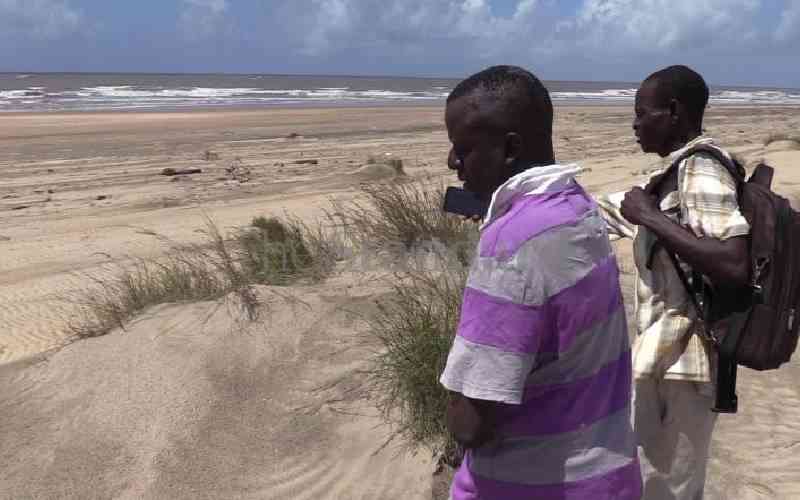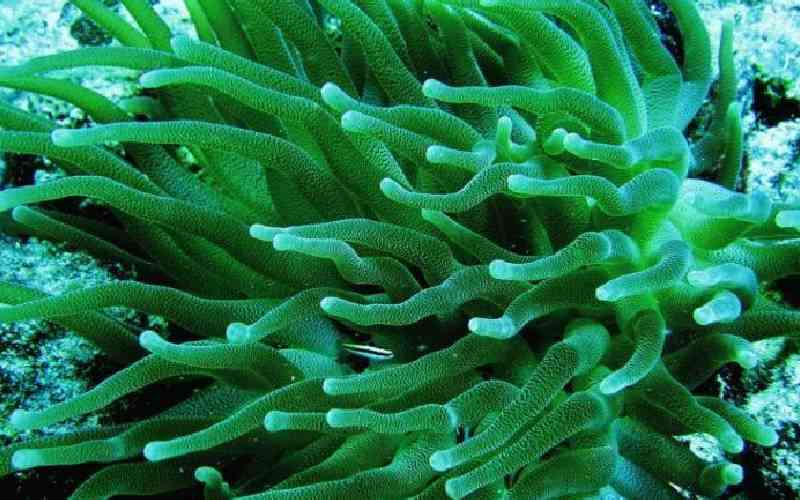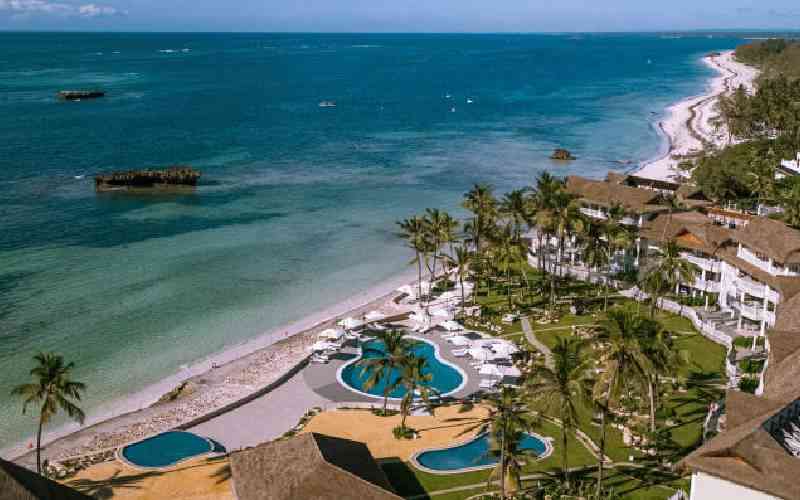I had always wanted to visit Malindi but had never got round to doing it, until the long Madaraka Day weekend when I decided to shore up — literally, and checked in at Temple Point Resort in Watamu, 22 kilometres from Malindi.
There was quite a number of Kenyans traveling to Malindi, and other coastal towns, which I thought was a boost to domestic tourism.
That was until I arrived.
Enroute to Temple Point Resort from the airport in Malindi, I noticed “Closed For Low Season” signages on the gates of other big hotels. The streets were deserted, save for few locals strolling around or riding motorbikes.
I later learnt that Temple Point Resort, where I spent my Madaraka weekend, is the only resort in Watamu that stays open all year round.
The resort is built to mirror the ancient Arabic style of housing, with stand-alone villas of four units each.
It is also situated near the remains of what is thought to be the first temple built during the spice trade, around eight centuries ago, by Arab traders.
It derives its name from its proximity to that temple.
My first night at Temple Point Resort was eventful, and the following day was not any different.
Ferdinand, the captain took me on a boat ride, out to the Marine Park.
TYPES OF FISH
On our way there, he told me that in the whole of Watamu, his boat is the biggest.
It has a capacity of 24 passengers, and each pays Sh3,500 which includes the park fees.
There were three smaller boats already buoyed at the corals. After we found a “parking” spot, Ferdinand briefed on how to wear the snorkeling goggles and what to do while in the water. Those of us who did not know how to swim — we were six — were given life jackets.
Then it was time to dive in.
Stay informed. Subscribe to our newsletter
Once we were in the water, the marine world came to life.
The Watamu Marine National Park was established in 1968, and is home to about 600 species of fish.
It was impossible to listen to Ferdinand explain the different types of fish and their traits in between coming up for air and the excitement of going back into the water to see more of the fishes swimming by.
There were many brightly coloured fish, but I only remember him mentioning the Zebra fish — which as the name suggests, has stripes like those of a zebra — and a turtle that swam gracefully below us.
Later that afternoon, we cancelled our trip to the Mangrove Forest because there was a storm, and instead went to the Bio-Ken Snake Farm and Gede Ruins.
Snakes have always fascinated me. Even though I have visited the snake park at the Nairobi Museum several times, this particular farm got me excited, and even a bit scared.
We were shown dangerous as well as harmless snakes found in Kenya.
This farm also hosts other reptiles like the Nile monitor lizard, the flap-necked chameleon, as well as the forest hinge-back tortoise and leopard tortoise.
It was interesting to learn that the forest hinge-back tortoise is omnivorous, while the leopard tortoise is herbivorous.
It took us a mere 15 minutes to Gede Ruins. There was no traffic, and we were almost the only ones on the road. At Gede Ruins, I not only learnt about the lives of the Arabs then, but also got to know how “modern” they were.
The whole “city” covered 45 acres and was built with coral rocks, cemented using coral powder.
It had two perimeter walls and the boundaries denoted the class of the people who lived within them.
The upper class resided within the inner wall, the middle class lived between the inner and the outer walls and the poor were outside the perimetre wall.
They had huge, deep wells, as well as seven mosques and a palace. One of the seven mosques, which was used only on Fridays, stands to date. Inscriptions on a stone wall which proved invaluable for dating this historical place are still visible on the stone wall.
They were so sophisticated, and “modern” that they had bidets as well as a bath tubs and the drain “pipes” are still visible.
Archeologists have found artefacts such as beads, porcelain items, scissors and oil lamps at the ruins.
PLENTY OF CLUBS
These prove that the inhabitants traded with people from different parts of the world.
From Gede Ruins, we were meant to visit the Butterfly Farm but it closed before we were done touring the ruins, so our trip did not materialise.
It was time to go back to the Temple Point Resort, the place that is more than a home away from home, thanks to friendly and polite staff who understand the needs of the guests, and try to make them comfortable.
Apart from friendly staff, Temple Point has a delectable menu and amenities which make it hard for many guests to check out...and if they do, they still come back.
That is why it stays open throughout the year as other establishments around it close due to low number of visitors.
With their kind of service, it is easy to understand why Temple Point’s well of visitors does not run dry; or why it has repeat clients who come back with their friends and relatives, thus creating a cycle of guests.
Later in the night, we decided to sample the night life of Malindi.
There are very many discotheques, clubs, casinos, pizzerias and even a supermarket that caters mainly to Italians who visit Watamu yearly. However, the town looked sleepy since most of the clubs were closed because patrons are scarce.
How does Temple Point manage to stay open the whole year?
“We had a choice to either go big or go small,” an ever-smiling Hans Jungen Langer, Temple Point’s proprietor told me.
“We decided to go big. We conduct our own roadshows in Europe, especially Germany.”
He added that o far, we have spent about Sh50 million on marketing.
“The next peak season starts from December 23, and till then we offer low season rates of Sh6500 per person, full board.”
 The Standard Group Plc is a
multi-media organization with investments in media platforms spanning newspaper
print operations, television, radio broadcasting, digital and online services. The
Standard Group is recognized as a leading multi-media house in Kenya with a key
influence in matters of national and international interest.
The Standard Group Plc is a
multi-media organization with investments in media platforms spanning newspaper
print operations, television, radio broadcasting, digital and online services. The
Standard Group is recognized as a leading multi-media house in Kenya with a key
influence in matters of national and international interest.
 The Standard Group Plc is a
multi-media organization with investments in media platforms spanning newspaper
print operations, television, radio broadcasting, digital and online services. The
Standard Group is recognized as a leading multi-media house in Kenya with a key
influence in matters of national and international interest.
The Standard Group Plc is a
multi-media organization with investments in media platforms spanning newspaper
print operations, television, radio broadcasting, digital and online services. The
Standard Group is recognized as a leading multi-media house in Kenya with a key
influence in matters of national and international interest.








